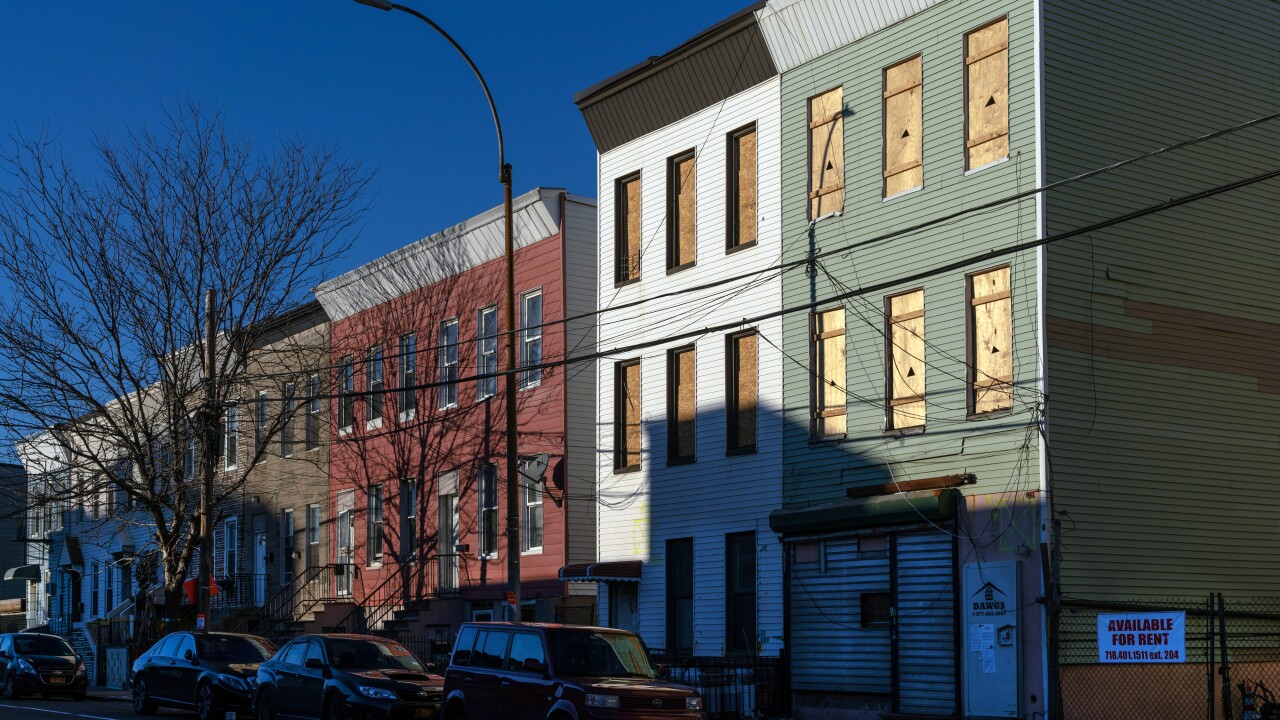Jerry Garcia’s home in Corpus Christi missed the worst of Hurricane Harvey by just a few miles and lost nothing more than some shingles and his backyard pier, which turned up further down Oso Bay. A five-foot bulkhead and sloping lawn shielded it from the flooding that’s devastated parts of Texas.
A homebuilder, Garcia said he built this place, like all the houses he builds, "above code" — stronger than the standards required by law, which in Texas tends to be less than in most states. But he doesn’t think those tougher standards should be imposed on every builder.
"You’ve got to find that medium, to build affordable housing," Garcia, 65, said sitting in his house as Harvey’s rains continued to pound the coast further north. Tougher mandatory codes mean higher costs, which means fewer homes. And if insurers had their way, he added, every home would be "a box with two doors and no windows."
Hurricane Harvey has highlighted a climate debate that had mostly stayed out of public view — a debate that’s separate from the battle over greenhouse gas emissions, but more consequential to the lives of many Americans. At the core of that fight is whether the U.S. should respond to the growing threat of extreme weather by changing how and, even where, homes are built.
That debate pits insurers, who favor tighter building codes and fewer homes in vulnerable locations, against homebuilders and developers, who want to keep homes as inexpensive as possible. As the costs of extreme weather increase, that fight has spilled over into politics: Federal budget hawks want local policies that will reduce the cost of disasters, while many state and local officials worry about the lost tax revenue that might accompany tighter restrictions on development.
Harvey slammed ashore in Texas Friday with historic levels of rain and flooding. On Wednesday, the storm returned, making landfall a second time in southwestern Louisiana, which was devastated by Hurricane Katrina in 2005. At least 15 people have died so far in Texas, according to a count by the Austin American-Statesman newspaper. Thousands more have been displaced from their homes. Early estimates on damages range from $42 billion to more than $100 billion.

Contributing to the high losses is the fact that Texas, despite being one of the states most vulnerable to storms, has one of the most relaxed approaches to building codes, inspections and other protections. It’s one of just four states along the Gulf and Atlantic coasts with no mandatory statewide building codes, according to the Insurance Institute for Business & Home Safety, and it has no statewide program to license building officials.
Texas policies leave homebuilding decision to cities, whose record is mixed: Corpus Christi uses codes that reflect national standards, minus the requirement that homes be built one foot above expected 100-year-flood levels, according to the Federal Alliance for Safe Homes. Nueces County, which encompasses Corpus Christi, has no residential building code whatsoever.
The consequence of loose or nonexistent codes is that storm damage is often worse than need be. "Disasters don’t have to be devastating," said Eleanor Kitzman, who was Texas’s state insurance commissioner from 2011 to 2013 and now runs a company in South Carolina that constructs and finances coastal homes that are above code. "We can’t prevent the event, but we can mitigate the damage."
Any proposal that would increase costs in Texas draws push back from homebuilders, a powerful group in a state where people despise red tape about as much as they hate taxes.
"They are not big on regulation," said Julie Rochman, chief executive officer of the insurance institute. That skepticism about government was on display in 2013, when the state’s two senators voted against additional federal funding to clean up after Superstorm Sandy. But it can be applied selectively: Gov. Greg Abbott requested federal money for Hurricane Harvey before it even made landfall.
Building codes elicit little support in Austin. At the end of this year’s state legislative session, the Texas Association of Builders posted a document boasting of its success at killing legislation it didn’t like. That included a bill that would have let cities require residential fire sprinklers, and another that would have given counties with 100,000 people or more authority over zoning, land use and oversight of building standards — something the builders’ group called “onerous.”
Ned Munoz, vice president of regulatory affairs for the Texas Association of Builders, said cities already do a good job choosing which parts of the building code are right for them. And he argued that people who live outside of cities don’t want the higher prices that come with land-use regulations.
Munoz said his association’s target is "unnecessary and burdensome government regulations, which increase the price of a home."
The fight in Texas is a microcosm of a national battle. The International Code Council, a Washington nonprofit made up of government officials and industry representatives, updates its model codes every three years, inviting state and local governments to adopt them. Last year, the National Association of Home Builders boasted of its prowess at stopping the 2018 codes it didn’t like.
"Only 6% of the proposals that NAHB opposed made it through the committee hearings intact," the association wrote on its blog. Some of the new codes that the homebuilders blocked had been proposed by the Federal Emergency Management Agency — the same agency that’s on the hook when homes collapse, flood or wash away. And when FEMA is on the hook, it’s really the taxpayer.
Ron Jones, an NAHB board member and builder in Colorado who is critical of the organization’s views on codes and regulations, said that while the focus now should be on helping people hurt by Harvey, he hoped the storm would also force new thinking.
"There’s no sort of national leadership involved," said Jones. "For them it’s just, ’Hell, we’ll rebuild these houses as many times as you’ll pay us to do it.’"
The homebuilders demonstrated their power again this year, when President Donald Trump reversed an Obama administration initiative restricting federally funded building projects in flood plains. "This is a huge victory for NAHB and its members," the association wrote on its blog.
Yet on other issues, Trump’s administration appears to be siding with those who favor tougher local policies. In an interview just before Harvey, FEMA chief Brock Long expressed support for an Obama administration proposal to spur more local action on resilience, such as better building codes, as a condition of getting first-dollar disaster relief from Washington.
"I don’t think the taxpayer should reward risk," Long told Bloomberg in the interview, four days before Harvey slammed into Texas.
It may seem surprising that a Republican administration would side with its Democratic predecessor on anything, especially something related to climate change. But the prompt is less ideological that practical. Over the past decade, the federal government spent more than $350 billion on disaster recovery, a figure that will almost certainly increase without major changes in local building codes and land use practice.
And much of that money goes to homes that keep getting hit. That’s true for the National Flood Insurance Program, which Congress must reauthorize by the end of next month; some lawmakers, and Long himself, have said homes that repeatedly flood should be excluded from coverage. But there are also 1.3 million households that have applied for federal disaster assistance money at least twice since 1998 — many of them in the same areas hit hardest by Hurricane Harvey.
In his interview, Long said his focus as FEMA’s administrator will be working with cities and states to ensure that areas hit by disasters get rebuilt differently, in a way that’s more resilient.
Some state lawmakers acknowledge the need to at least consider doing things differently. Todd Hunter, who represents this part of the coast in the Texas House of Representatives, said Harvey will ignite a conversation about the need for statewide building codes.
"The discussion needs to start," Hunter said in an interview at his law office overlooking downtown Corpus Christi, where many of the buildings visible out his window were still without power. And that discussion could go beyond codes: "We need to take a look at where structures are being built."
Others are less optimistic. If people living along the Texas coast had to pay the full cost of the risk they face, some parts of that coast might empty out. That’s what worries Albert Betts Jr, executive director of the Texas Insurers Council, the trade association representing insurance companies. And it’s why he thinks Hurricane Harvey won’t shift public policy.
It’s not that Betts doesn’t like a fight. At his office off a freeway in Austin, his desk is adorned with a hammer on one side and a miniature punching bag on the other. But Betts said the price of real change could be too high.
"I can’t sit here and tell you, as a Texan, that I don’t want that area developed," Betts said. "Smarter people than me have yet to figure that out."





